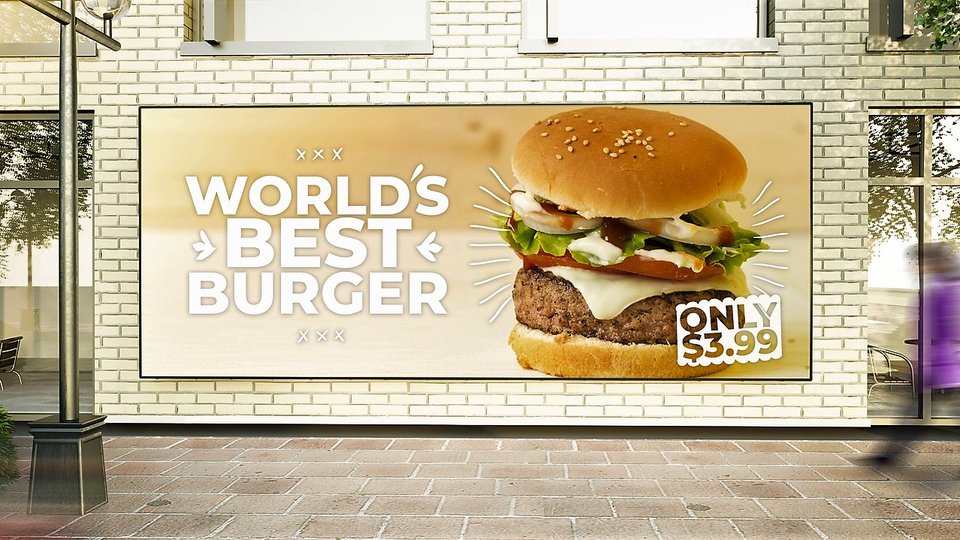Blog
How QSRs can create ad formulas that change consumer behavior
Determining whether your marketing is actually motivating QSR visits has always been a bit of a muddled mess. But improved AI-powered algorithms can now clearly distinguish between ad-prompted visits and those that were going to occur anyway. The difference is a bankable one.

February 18, 2020 by Antonio Tomarchio — Founder and CEO, Cuebiq
Restaurant-goers don't usually think too long and hard before deciding to enter a Burger King, McDonald's or any other QSR. Unlike those heading into a particular jewelry store or upscale fine-dining establishment, where the financial outlay is likely to be far more substantial, those who walk into a fast food place often do so opportunistically, after a split-second decision that is often made as a matter of convenience.
Given the propensity for QSR consumers to have such a narrow window from decision, to purchase, their choices tend to be limited to outlets nearby. This scenario not only makes store location data critical to put in the hands of consumers, but also makes location intelligence highly valuable to QSR marketers as they evaluate the level of their effort's success.
QSR marketers have long-hinged their bets on measuring sales to gauge ad campaign success. But tabulating burger, doughnut and coffee sales is only one part of the insights actually needed to determine whether any specific marketing activity is actually working.
Sales metrics alone will not inform brand leadership which part or parts of their advertising efforts have succeeded in driving incremental visits, as in those store visits that wouldn't have happened otherwise. Also, sales results alone cannot uncover which media channels were most effective in achieving campaign goals, or what portions of a particular campaign worked best with other channels.
QSR marketers — like those at Chick-fil-A, Dunkin' and KFC — are keenly aware that some consumers have already planned to visit one of their locations, regardless of whether those diners actually saw the brand's latest ad campaign or not.
Since all marketers and brand leaders wanting to spend media dollars more efficiently, it's no surprise that no one wants to waste valuable media dollars trying to reach audiences that already planned to visit the brand's stores. Appropriately, QSR leaders want to distill which customers need to see an ad to prompt them to visit a store.
The 'incremental' difference
Moving beyond reliance on foot traffic and sales data alone, intelligent data and deeper analyses now make it possible for QSR marketers to accurately identify the incremental effect of their advertising efforts by calculating new sales, minus a brand's baseline sales.
In advertising, we talk about "last-click attribution" to refer to how we attribute a sale or conversion to a particular advertising effort, like a coupon or TV spot. But, although attribution has been firmly established by those analyzing the effect of marketing initiatives, taking it the next step — from attribution to "incrementality" — is key for QSR marketers.
Incrementality entails the analysis of user behavior to determine whether ads have changed consumer behavior or generated incremental value. It gauges what really counts, or how much business a QSR brand receives as a result of its ad investment, as opposed to the brand not advertising at all.
Today, QSR marketers can truly see if their ad campaigns effectively change consumer behavior. That, in turn, informs leaders on how best to improve on the brand's media allocation decisions for maximum effect going forward.
AI-powered algorithms not only now measure advertising impact more effectively, but also provide more detailed campaign analytics. For example, these algorithms can identify which customers (aggregated into groups according to shared attributes, such as demographics or visitation patterns) exposed to advertising, were most likely to make an incremental visit.
Once QSR marketers can better anticipate ad sensitivity and a customer's likelihood to visit a store, the game changes. Media planning and buying decisions are far better informed, and spending versus results produces higher yields to the bottom line.
Also, by differentiating which store visits are incremental, QSR marketers can calculate and optimize the cost per incremental visit (CPIV) for campaigns. By using the things learned about customers who are more likely to make incremental visits after seeing an ad, QSRs can optimize media budgets accordingly to find look-a-like audiences or test those learnings across other customer groups of customers to find strategies that provide the highest ROI.
It's clear that QSR marketers are highly interested in this area of brand effectiveness, since according to 451 Research, 84% of QSR marketers surveyed said they want to use location data to help predict customer behavior. The same percentage said they wanted to use location data to gain insight into attribution. And nearly as many (82%) said optimizing media spend in real time to target ad impressions while in flight would be a welcome use case.
Today, the campaign planning playbook is being fueled with technology and machine learning, and that, in turn, is helping advertisers spend their media dollars more wisely than ever. Incrementality is key and the ability to attribute success to a specific marketing action is finally possible.
About Antonio Tomarchio
Antonio Tomarchio is the founder and CEO of Cuebiq. An impressive entrepreneur, he has founded several companies since the age of 19. Antonio holds an M.S. in Mathematical Engineering from Polytechnic University of Milan and a double degree in Engineering Science from the Ecole Centrale de Paris.




